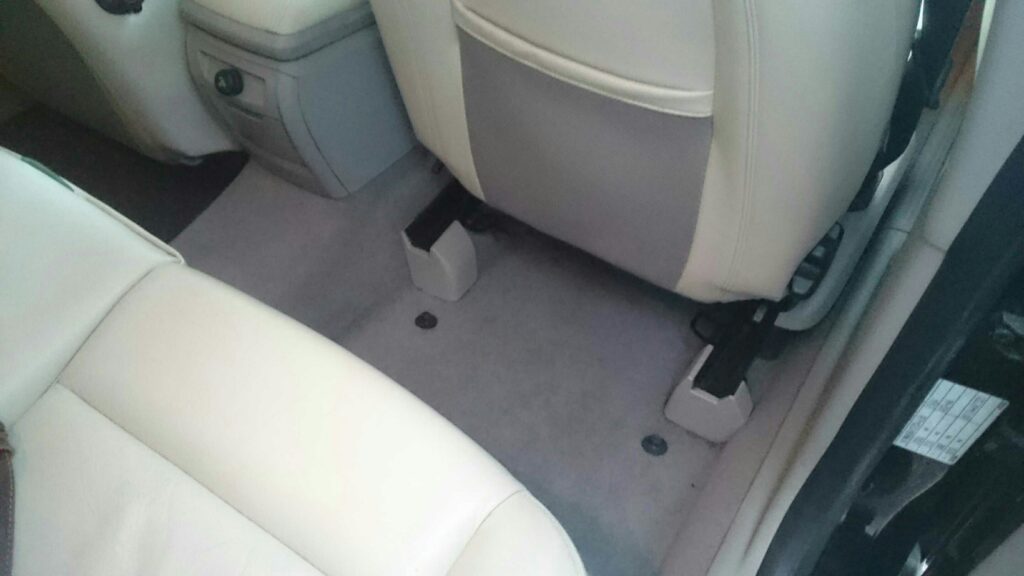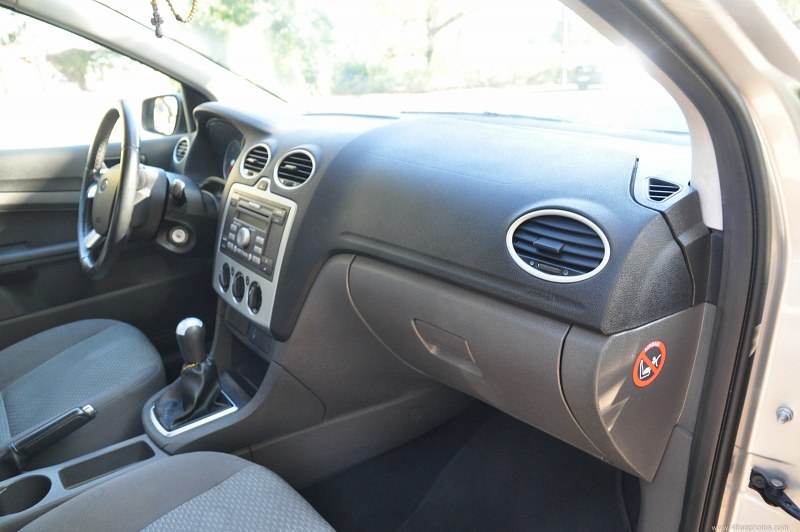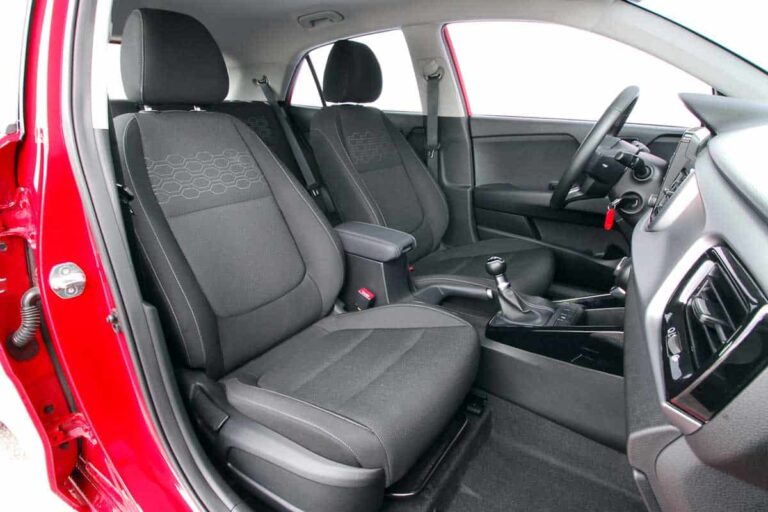A wet back footwell in a car can happen for different reasons. It could be due to things like leaks from the roof or windows, clogs in drainage channels, or problems with seals and gaskets. Sometimes, wet weather or spills inside the car can make the footwell wet too. If the car’s air conditioning or heating system isn’t working right, it might cause moisture to build up on the floor.
In addition, to find out why it’s wet and fix the problem, you may need a mechanic to inspect your car. This is important to prevent issues like mold and mildew from growing because of too much moisture.
What are the common causes of a wet back footwell in a car?
A wet back footwell in a car can be caused by several factors, and diagnosing the exact cause may require some investigation.
Roof and Window Leaks
If your car has a sunroof or a damaged roof, rainwater can seep through gaps or cracks in the roof’s structure, making its way into the back footwell. Even minor damage to the roof can lead to significant leakage during heavy rainfall.
Faulty window seals or improperly closed windows can also allow water to enter the car’s interior. It’s important to ensure that windows are properly sealed, and seals are in good condition to prevent leaks.
Blocked Drainage Channels

Many cars have drainage channels designed to direct rainwater away from the roof and doors. If these channels become clogged with debris, leaves, or dirt, water can pool and eventually find its way into the back footwell. Regularly clearing these channels can help prevent this issue.
Damaged Seals and Gaskets
Seals and gaskets around car doors and windows are essential for keeping water out. Over time, these seals can wear out or become damaged. Even small cracks or tears can allow water to penetrate the interior, especially during heavy rain or car washes.
Humidity and Condensation
In areas with high humidity, moisture in the air can condense on cold surfaces inside the car, like the windows and floors. This can make it seem as though there’s a leak, even when there isn’t. Proper ventilation or using a dehumidifier can help reduce this issue.
Spills and Wet Items
Sometimes, the source of the wet footwell is as simple as a spill or wet items left in the back seat. Spilled drinks, wet umbrellas, or damp clothing can create the illusion of a leak when, in fact, it’s a result of something within the car.
HVAC System Issues
Problems with the car’s heating, ventilation, and air conditioning (HVAC) system can also lead to moisture in the footwell. This can occur if there’s a blockage or malfunction in the drainage system for the evaporator core, which can result in condensation accumulating on the floor.
How can ignoring a wet back footwell problem lead to consequences?
To avoid these negative consequences, it’s important to promptly address and resolve any wet back footwell issues in your car.
Mold and Mildew Growth
When moisture is allowed to persist in the footwell, it creates a conducive environment for mold and mildew to grow. These fungi can thrive in damp conditions and may appear on the carpet, seats, and other surfaces in the car.
Mold and mildew not only cause a musty and unpleasant odor but can also lead to structural damage to the car’s interior. They can eat away at materials like fabric, carpet, and even metal components if left untreated.
Moreover, mold and mildew spores can pose health risks to passengers. Exposure to these allergenic spores can result in respiratory issues, allergies, and other health problems, especially for individuals who are sensitive to mold.
Health Risks
Ignoring a wet footwell can lead to various health risks. As mentioned, mold and mildew growth can release spores into the air. Inhaling these spores can cause or exacerbate respiratory issues, such as asthma and allergies.
Prolonged exposure to a damp and moldy environment may also lead to more severe health problems, including respiratory infections. Moreover, the musty odor itself can be unpleasant and discomforting during your car rides.
If the moisture in the footwell is due to a malfunction in the HVAC system, it can affect the overall air quality in the car, potentially exposing passengers to harmful contaminants and allergens.
Interior Damage
The damp conditions in the footwell can lead to damage to the car’s interior. This can include rusting of metal components, such as seat brackets or electrical connections, which can be expensive to repair.
In addition, upholstery, carpets, and other interior materials can degrade over time when exposed to moisture. Stains, discoloration, and deterioration of these materials are common consequences of a wet footwell.
If the issue remains unaddressed, it can negatively impact the resale value of your vehicle, as potential buyers may be deterred by visible interior damage and the associated repair costs.
What steps can be taken to identify the cause of a wet back footwell in a car?

Acting promptly and addressing the issue properly is crucial to prevent further damage and maintain a safe and comfortable driving environment.
Self-inspection tips
Check for Visible Leaks: Begin by inspecting the interior of your car. Look for signs of water, such as wet carpeting, dampness on the seats or floor mats, and water droplets on the windows. This can help you identify the general area of the leak.
Examine Seals and Gaskets: Inspect the seals around doors and windows. Look for visible cracks, tears, or wear. Gently run your hand along the seals to feel for any irregularities or gaps.
Clear Drainage Channels: If you suspect blocked drainage channels, examine them closely. These channels are often located along the edges of the roof, doors, and the rear of the car. Clear any debris or obstructions from these channels to allow proper drainage.
HVAC System: If you suspect HVAC system issues, check for signs of water accumulation or moisture under the dashboard or near the vents. An unusual smell, like a musty odor, can also indicate a problem with the system.
Recent Spills or Wet Items: Consider whether any recent spills or wet items may be the cause. Remove any wet items from the car, and thoroughly dry the affected area to see if the problem persists.
Condensation: If the issue seems to be due to condensation, especially in humid climates, ensure that your car’s interior is well-ventilated. Use a dehumidifier, if necessary, to reduce excess moisture inside the vehicle.
FAQ’s
How do you fix a wet car floor?
To fix a wet car floor, you must identify and address the source of the water intrusion. This may involve repairing or replacing damaged seals, drainage systems, or addressing internal issues like a leaking heater core.
How do you fix a wet floor?
Fixing a wet floor depends on the cause. Inspect for leaks, blockages, or damaged components in the vehicle’s exterior or interior. Address the issue by repairing or replacing the faulty parts.
Why is my passenger footwell wet?
A wet passenger footwell can be caused by various factors, including a leaking heater core, damaged seals, clogged drains, or leaking windows. Identifying the specific cause is crucial for resolving the issue.
How do you dry a footwell?
To dry a footwell, remove any wet carpet and padding, then use fans, dehumidifiers, or even natural airflow to help it dry. Ensure the source of moisture is fixed to prevent further wetness.
Why is my car floor wet on the passenger side?
A wet car floor on the passenger side can result from issues like a leaking heater core, damaged seals, or water ingress from the exterior. Investigate and address the specific cause.
Is moisture in a car bad?
Excess moisture in a car can lead to mold growth, bad odors, and damage to interior components. It’s essential to address and prevent moisture to maintain a healthy and well-maintained vehicle interior.
Final Words
It’s important to remember that a wet back footwell in your car can result from various reasons like leaks, clogs, or even just a simple spill. Ignoring this issue can lead to harmful consequences, such as mold growth, health risks, and damage to your car’s interior. To tackle this problem, you can perform a self-inspection or seek professional help.
Prompt action is vital to prevent further troubles. So, when you spot a wet footwell, don’t wait to address it, fix it, and ensure a safe and comfy ride for you and your passengers.

